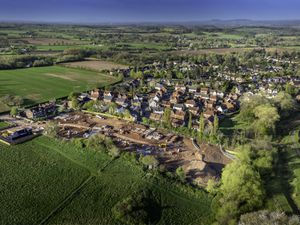No large fall in pollution in Black Country despite coronavirus lockdown
The Black Country and Staffordshire has yet to see a fall in pollution from vehicles following the coronavirus lockdown, research has suggested.

Nitrogen dioxide levels have remained roughly the same in most places in the days following the stringent measures imposed by the Government compared to the same period last year, and even risen in some places.
Vehicles have remained on the roads in large numbers, though there has been a noticeable drop in traffic in many areas as those who can work from home.
Experts say the coronavirus pandemic could lead to a drop in harmful pollution in the air as large parts of the country shut down.
Data from the first week of the lockdown showed while pollution had fallen in many other parts of the UK, the Black Country and parts of Staffordshire and Shropshire had yet to see a positive change.
Monitoring stations are placed on roads across the region to track pollution levels.
The station at Walsall Woodlands showed an increase in nitrogen dioxide compared to last year from 13.8 micrograms per cubic metre to 18.1.
There has also been a slight increase at the A5190 at Cannock, from 20.4 to 22.
At Telford Hollinswood, pollution levels rose from 12.1 to 15.6.
There has, however, been a drop in pollution at Birmingham Road, Oldbury, where levels went from 35.1 to 29.8.
It's also a mixed picture in Birmingham, one of the busiest areas in the country.
Pollution levels at the A4540 have fallen from 30.5 to 25.5 but at Acocks Green there was a rise from 15.4 to 16.
However, over the last six weeks pollution as a whole has fallen by a fifth in Birmingham, analysis shows.
Scientists say pollution levels will continue to drop as fewer drivers use their cars over the coming weeks.
Black Country councils have taken action to try and reduce pollution over the last few years, declaring a "climate emergency".
Last month, Sandwell was named one of 75 local authorities in the UK – and the only one in the West Midlands – where average levels of tiny toxic particles in the air are continuing to exceed guidelines set out by the World Health Organisation.





